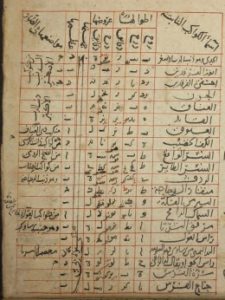An article by Dr. Hanif Qalandari and Dr. Hassan Amini, faculty members of the Faculty of Theology and Islamic Studies at the University of Tehran, has been published. The article, titled “Kharghi Star Table: A Star Table from Islamic Period Astronomy,” explores the astronomical works of the Islamic period.
Dr. Qalandari explains that these works can be divided into two categories: theoretical astronomy and practical astronomy. Theoretical astronomy focuses on the movement patterns of celestial bodies and related geometric proofs, while practical astronomy includes astronomical tables known as “zij” during the Islamic period. One of the main tables is the star table, which lists the names of stars along with their ecliptic coordinates and luminosity.
Dr. Qalandari, an assistant professor at the History of Science Research Institute at Tehran University, describes the features of astronomy during the Islamic period. He explains that before telescopes were invented, astronomers focused on stars visible in the night sky. These stars were classified into 48 constellations and numbered at 1022.
In addition to zijs, some astronomy books also included star tables. These books describe the movement patterns of celestial bodies and mathematical geography. One of the most comprehensive works is “Muntahi al-Idrak fi Taqasim al-Aflak” by Bahauddin Abdul Jabbar Kharghi, written in 526 AH. This book contains a detailed chapter on stars and a table listing 84 stars.
In their recently published article, Dr. Qalandari and Dr. Amini compare Kharghi’s star table with his main sources: Ptolemy’s “Majesti,” Abd al-Rahman Sufi’s “Sur al-Kawakb,” and some writings by Abu Rihan al-Biruni. They make a claim about when the table was compiled.

The table of the stars of the Big Dipper constellation in one of the remaining manuscripts of Sur al-Kawakb, written by Abdur Rahman Sufi
(Berlin Library, Lundberg Collection 71)

A page of the table of stars in one of the versions of Mantehi al-Idrak fi Taqasim al-Aflaq
(Berlin Library, No. 5669, Lundberg Collection 33)
The joint article by Dr. Qalandari and Dr. Amini is titled “Kharaqī’s Star Catalogue: A Star table from Medieval Arabic Astronomy” and has been published in English in Tehran University’s journal of Science. Dr. Qalandari has previously edited and published the Arabic text of Kharghi’s treatise “Mantahi al-Idrak fi Taqasim al-Aflak” along with a Persian translation.
